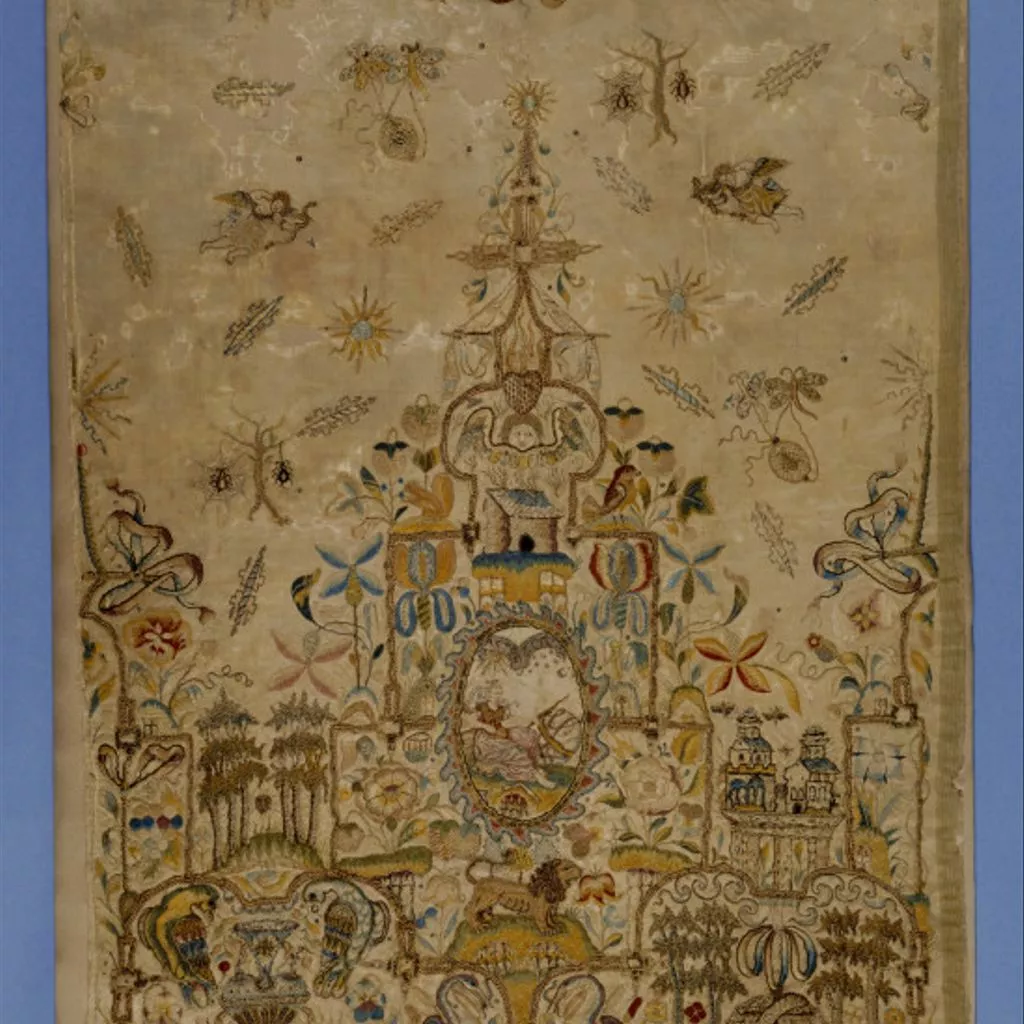Description
Skirt petticoat panel of satin embroidered with silk, England, ca. 1600
Fashionable gowns of the 1590s and early 1600s were often worn open in front to reveal a decorative petticoat or forepart underneath. The design of this embroidered silk and gilt thread petticoat panel includes a spider's web, jagged arrows, obelisk and armillary sphere, all well-known motifs from contemporary emblem books.
Skirt petticoat panel of satin embroidered with silk, silver-gilt thread and silver spangles. The design includes a spider web, jagged arrows, obelisk and armillary sphere, all well-known motifs from contemporary emblem books. Long and short, satin, stem and brick stitches with laid and couched work and French knots, partially padded.
Complex design of thin strapwork which forms a dome tower in the centre of the panel with arcading below. Within the frame of the tower is a medallion containing a female figure with a spear and an armillary sphere beneath a scroll with the word 'ASTROLOG'. Beneath the medallion, a lion stands on a grassy mound, above is a hut and, within the dome, a winged cherub's head surmounted by a flaming heart. The outside of the structure and the remainder of the interior are decorated with large sprigs of roses, pansies, lilies, strawberries and other flowers, with owls, a squirrel and a bird. Beneath the arcades at the bottom of the panel are, from left to right, a large vase decorated with dolphins into which rain falls from a cloud, flanked by two large parrots, two storks hold snakes in the beaks and they stand among bulrushes, a large armillary sphere is suspended with ribbons from a hand emerging the clouds and, to either side, are trees. Above the arcades, to either side of the central structure, are a clump of trees and an ornate building on a bridge, from behind both shrines is a sun. At either end of the panel the arcading rises to form pyramids, surmounted by thunderbolts tied with ribbons. The pattern continues on the adjacent panels. The remainder of the ground above the arcading is powered with motifs including spiders hanging from trees, pairs of butterflies drawing a spider in a net, cupids shooting arrows, suns, musical trophies and thunderbolts.
A portrait of Elizabeth I by an unknown artist (c.1599) at Hardwick Hall illustrates a splendidly embroidered example.






